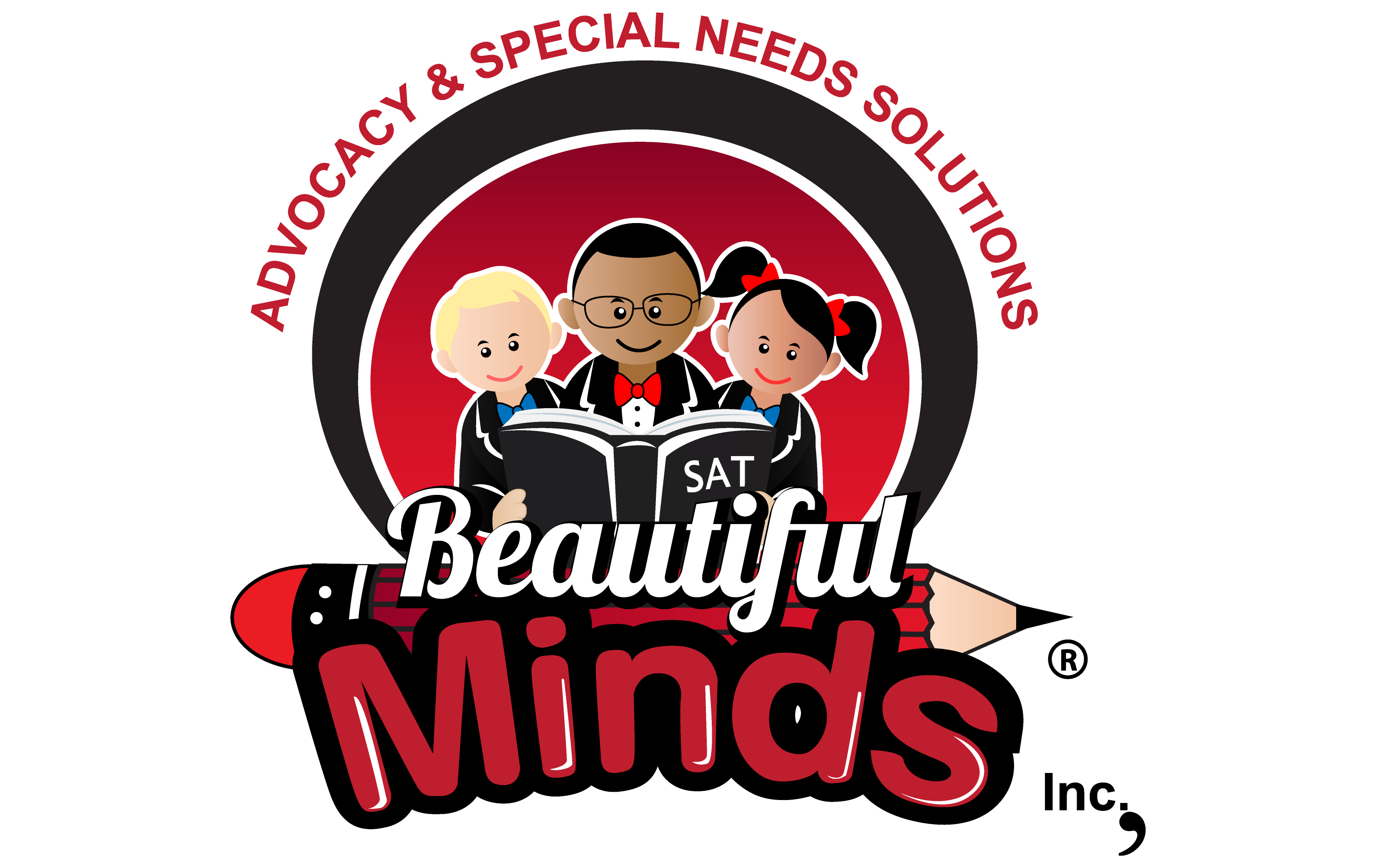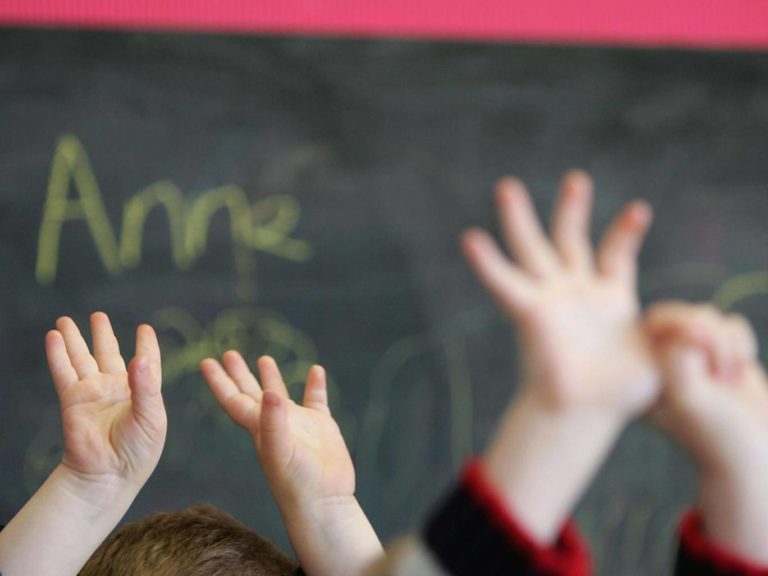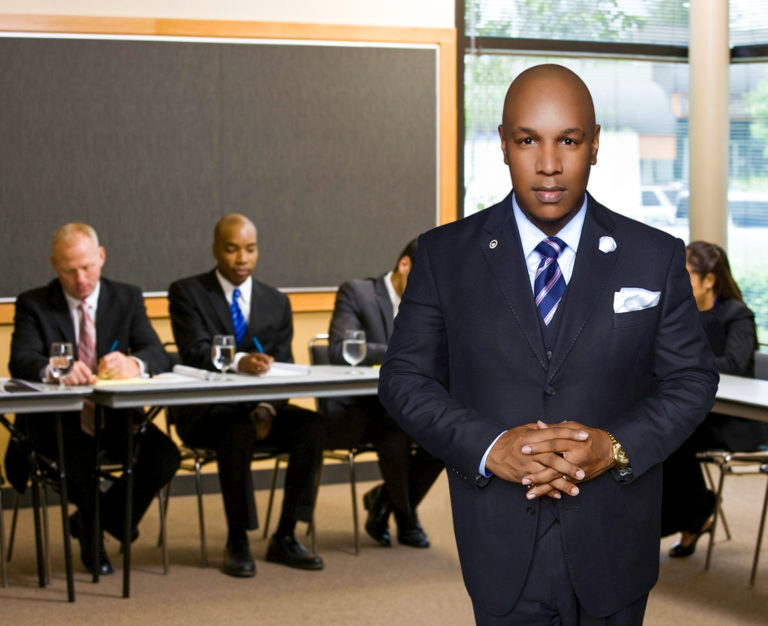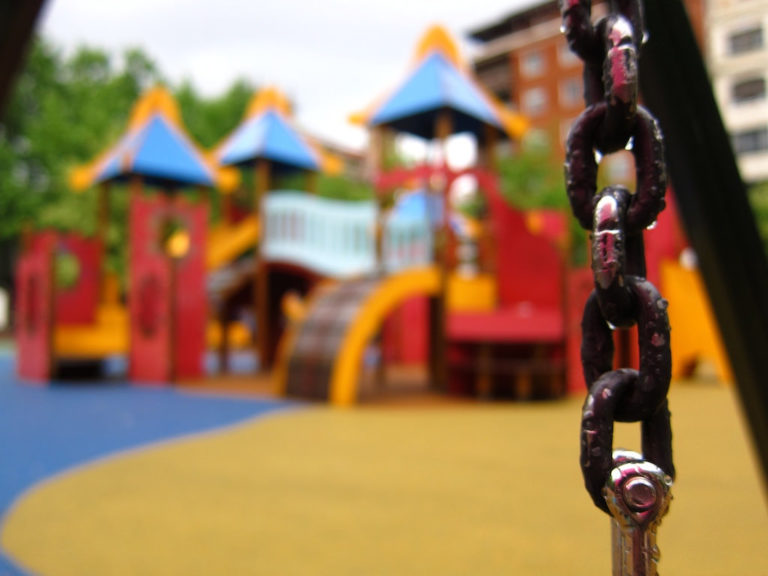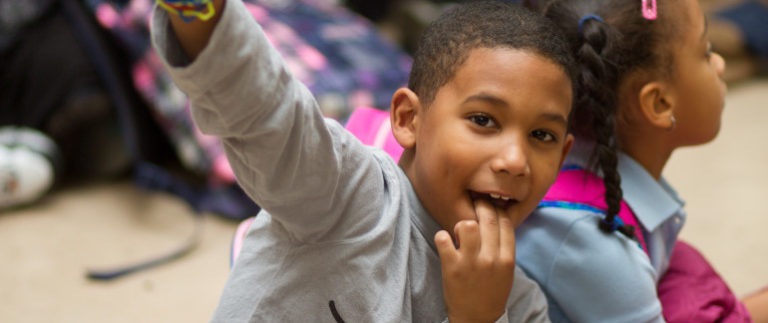By: Ifeanyi-Allah Ufondu, Marie Tejero Hughes, Sally Watson Moody, and Batya Elbaum
After discussion of each grouping format, implications for practice are highlighted with particular emphasis on instructional practices that promote effective grouping to meet the needs of all students during reading in general education classrooms. In the last 5 years, two issues in education have assumed considerable importance: reading instruction and inclusion. With respect to reading instruction, the issue has been twofold: (a) Too many students are not making adequate progress in reading), and (b) we are not taking advantage of research based practices in the implementation of reading programs. In the popular press the complexities and subtleties of this issue have been reduced to a simple argument between phonics versus whole language, but the reality is that there is considerable concern about the quality and effectiveness of early reading instruction. With respect to the second major issue of inclusion, considerable effort has been expended to restructure special and general education so that the needs of students with disabilities are better met within integrated settings. The result is that more students with disabilities receive education within general education settings than ever before, and increased collaboration is taking place between general and special education.
Both of these issues-reading instruction and inclusion-have been the topics for national agendas (e.g., President Clinton’s announcement in his State of the Union Address in 1996 that every child read by the end of third grade, Regular Education Initiative), state initiatives (e.g., Texas and California Reading Initiatives), and local school districts. The implementation of practices related to both of these issues has immediate and substantive impact on professional development, teaching practices, and materials used by classroom teachers.
Grouping practices for reading instruction play a critical role in facilitating effective implementation of both reading instruction and inclusion of students with disabilities in general education classes. Maheady referred to grouping as one of the alterable instructional factors that “can powerfully influence positively or negatively the levels of individual student engagement and hence academic progress”, as well as a means by which we can address diversity in classrooms. As increased numbers of students with learning disabilities (LD) are receiving education in the general education classroom, teachers will need to consider grouping practices that are effective for meeting these students’ needs. Furthermore, reading instruction is the academic area of greatest need for students with LD; thus, grouping practices that enhance the reading acquisition skills of students with LD need to be identified and implemented.
Until relatively recently, most teachers used homogeneous (same ability) groups for reading instruction. This prevailing practice was criticized based on several factors; ability grouping: (a) lowers self-esteem and reduces motivation among poor readers, (b) restricts friendship choices, and (c) widens the gap between poor readers and good readers. Perhaps the most alarming aspect of ability grouping was the finding that students who were the poorest readers received reading instruction that was inferior to that of higher ability counterparts in terms of instructional time; time reading, discussing, and comprehending text (Allington, 1980); and appropriateness of reading materials. As a result, heterogeneous grouping practices now prevail, and alternative grouping practices such as cooperative learning and peer tutoring have been developed.
As general education classrooms become more heterogeneous, due in part to the integration of students with LD, both special and general education teachers need to have at their disposal a variety of instructional techniques designed to meet the individual needs of their students. In this article, we provide an overview of the recent research on grouping. practices (whole class, small group, pairs, one-on-one) teachers use during reading instruction; furthermore, implications for reading instruction are highlighted after each discussion.
Whole-class instruction
Research findings
Considerable research has focused on the fact that for much of general education the instructional format is one in which the teacher delivers education to the class as a whole. The practice of whole-class instruction as the dominant approach to instruction has been well documented. For example, in a study that involved 60 elementary, middle, and high school general education classrooms that were observed over an entire year, whole-class instruction was the norm. When teachers were not providing whole-class instruction, they typically circulated around the room monitoring progress and behavior or attended to their own paperwork.
Elementary students have also reported that whole-class instruction is the predominant instructional grouping format. Students noted that teachers most frequently provided reading instruction to the class as a whole or by having students work alone. Students less frequently reported opportunities to work in small groups, and they rarely worked in pairs. Although students preferred to receive reading instruction in mixed-ability groups, they considered same ability grouping for reading important for nonreaders. Students who were identified as better readers revealed that they were sensitive to the needs of lower readers and did not express concerns about the unfairness of having to help them in mixed-ability groups. In particular, students with LD expressed appreciation for mixed-ability groups because they could then readily obtain help in identifying words or understanding what they were reading.
Many professionals have argued that teachers must decentralize some of their instruction if they are going to appropriately meet the needs of the increasing number of students with reading difficulties. However, general education teachers perceive that it is a lot more feasible to provide large-group instruction than small-group instruction for students with LD in the general education classroom. The issue is also true for individualizing instruction or finding time to provide mini lessons for students with LD. Teachers have reported that these are difficult tasks to embed in their instructional routines.
Implications for practice
Numerous routines and instructional practices can contribute to teachers’ effective use of whole-class instruction and implementation of alternative grouping practices.
Teachers can involve all students during whole-class instruction by asking questions and then asking students to partner to discuss the answer. Ask one student from the pair to provide the answer. This keeps all students engaged.
Teachers can use informal member checks to determine whether students agree, disagree, or have a question about a point made. This allows each student to quickly register a vote and requires students to attend to the question asked. Member checks can be used frequently and quickly to maintain engagement and learning for all students.
Teachers can ask students to provide summaries of the main points of a presentation through a discussion or after directions are provided. All students benefit when the material is reviewed, and a student summary allows the teacher to determine whether students understand the critical features.
Because many students with LD are reluctant to ask questions in large groups, teachers can provide cues to encourage and support students in taking risks. For example, teachers can encourage students to ask a “who,” “what,” or “where” question.
At the conclusion of a reading lesson, the teacher can distribute lesson reminder sheets, which all the students complete. These can be used by teachers to determine (a) what students have learned from the lesson, (b) what students liked about what they learned, and (c) what else students know about the topic.
Small-group instruction
Research findings
Small-group instruction offers an environment for teachers to provide students extensive opportunities to express what they know and receive feedback from other students and the teacher. Instructional conversations are easier to conduct and support with a small group of students. In a recent meta-analysis of the extent to which variation in effect sizes for reading outcomes for students with disabilities was associated with grouping format for reading instruction, small groups were found to yield the highest effect sizes. It is important to add that the overall number of small-group studies available in the sample was two. However, this finding is bolstered by the results of a meta-analysis of small-group instruction for students without disabilities, which yielded significantly high effect sizes for small-group instruction. The findings from this meta-analysis reveal that students in small groups in the classroom learned significantly more than students who were not instructed in small groups.
In a summary of the literature across academic areas for students with mild to severe disabilities, Polloway, Cronin, and Patton indicated that the research supported the efficacy of small-group instruction. In fact, their synthesis revealed that one-to-one instruction was not superior to small-group instruction. They further identified several benefits of small-group instruction, which include more efficient use of teacher and student time, lower cost, increased instructional time, increased peer interaction, and opportunities for students to improve generalization of skills.
In a descriptive study of the teacher-student ratios in special education classrooms (e.g., 1-1 instruction, 1-3 instruction, and 1-6 instruction), smaller teacher-led groups were associated with qualitatively and quantitatively better instruction. Missing from this study was an examination of student academic performance; thus, the effectiveness of various group sizes in terms of student achievement could not be determined.
A question that requires further attention regarding the effectiveness of small groups is the size of the group needed based on the instructional needs of the student. For example, are reading group sizes of six as effective as groups of three? At what point is the group size so large that the effects are similar to those of whole-class instruction? Do students who are beginning readers or those who have struggled extensively learning to read require much smaller groups, perhaps even one-on-one instruction, to ensure progress?
Although small group instruction is likely a very powerful tool to enhance the reading success of many children with LD, it is unlikely to be sufficient for many students. In addition to the size of the group, issues about the role of the teacher in small-group instruction require further investigation. In our analysis of the effectiveness of grouping practices for reading, each of the two studies represented different roles for the teacher. In one study, the teacher served primarily as the facilitator, while in a second study the teacher’s role was primarily one of providing direct instruction. Although the effect sizes for both studies were quite high (1.61 and .75, respectively), further research is needed to better understand issues related to a teacher’s role and responsibility within the group.
Implications for practice
Many teachers reveal that they have received little or no professional development in how to develop and implement successful instructional groups. Effective use of instructional groups may be enhanced through some of the following practices.
Perhaps the most obvious, but not always the most feasible application of instructional groups, is to implement reading groups that are led by the teacher. Whereas these groups have been demonstrated as effective, many teachers find it difficult to provide effective instruction to other members of the class while they are providing small-group instruction. Some teachers address this problem by providing learning centers, project learning, and shared reading time during small group instruction.
Flexible grouping has also been suggested as a procedure for implementing small-group instruction that addresses the specific needs of students without restricting their engagement to the same group all the time. Flexible grouping is considered an effective practice for enhancing the knowledge and skills of students without the negative social consequences associated with more permanent reading groups. This way teachers can use a variety of grouping formats at different times, determined by such criteria as students’ skills, prior knowledge, or interest. Flexible groups may be particularly valuable for students with LD who require explicit, intensive instruction in reading as well as opportunities for collaborative group work with classmates who are more proficient readers. Flexible grouping may also satisfy students’ preferences for working with a range of classmates rather than with the same students all of the time.
Student-led small groups have become increasingly popular based on the effective implementation of reciprocal teaching. This procedure allows students to take turns assuming the role of the leader and guiding reading instruction through question direction and answer facilitation.
Peer pairing and tutoring
Research findings
Asking students to work with a peer is an effective procedure for enhancing student learning in reading and is practical to implement because teachers are not responsible for direct contact with students. For students with LD involved in reading activities, the overall effect size for peer pairing based on a meta-analysis was ES = .37. This finding was similar to one reported for students with LD (ES = .36; Mathes & Fuchs, 1994) and for general education students (mean ES = .40).
The Elbaum and colleagues report revealed that the magnitude of the effects for peer pairing differed considerably depending on the role of the student within the pair. For example, when students with disabilities were paired with same-age partners, they derived greater benefit (ES = .43) from being tutored rather than from engagement in reciprocal tutoring (ES = .15). This may be a result that for the most part the tutors were students without disabilities who demonstrated better reading skills and were able to provide more effective instruction. These findings differ, however, when the peer pairing is cross-age rather than same-age. Overall, cross-age peer pairing students with disabilities derived greater benefit when they served in the role of tutor.
Students with LD prefer to work in pairs (with another student) rather than in large groups or by themselves. In fact, many students with LD consider other students to be their favorite teacher. Considering the high motivation students express for working with peers and the moderately high effect sizes that result from peer pairing activities for reading, it is unfortunate that students report very low use of peer pairing as an instructional procedure.
Implications for practice
Because students appreciate and benefit from opportunities to work with peers in reading activities, the following instructional practices may enhance opportunities for teachers to construct effective peer pairing within their classrooms.
Classwide Peer Tutoring (CWPT) is an instructional practice developed at Juniper Gardens to “increase the proportion of instructional time that all students engage in academic behaviors and provide pacing, feedback, immediate error correction, high mastery levels, and content coverage”. CWPT requires 30 minutes of instructional time during which 10 minutes is planned for each student to serve as a tutor, 10 minutes to be tutored, and 5 to 10 minutes to add and post individual and team points. Tutees begin by reading a brief passage from their book to their tutor, who in turns provides immediate error correction as well as points for correctly reading the sentences. When CWPT is used for reading comprehension, the tutee responds to “who, what, when, where, and why” questions provided by the tutor concerning the reading passage. The tutor corrects responses and provides the tutee with feedback.
Peer-Assisted Learning Strategies (PALS) borrows the basic structure of the original CWPT but expands the procedures to engage students in strategic reading activities. Students are engaged in three strategic reading activities more typically addressed during teacher directed instruction: partner reading with retell, paragraph summary, and prediction relay. PALS provides students with intensive, systematic practice in reading aloud, reviewing and sequencing information read, summarizing, stating main ideas, and predicting.
Think-Pair-Share hare was described by McTighe and Lyman as a procedure for enhancing student engagement and learning by providing students with opportunities to work individually and then to share their thinking or work with a partner. First, students are asked to think individually about a topic for several minutes. Then they are asked to work with a partner to discuss their thinking or ideas and to form a joint response. Pairs of students then share their responses with the class as a whole.
One-on-one instruction
Research findings
Traditionally, one-on-one instruction in which the student receives explicit instruction by the teacher is considered the most effective practice for enhancing outcomes for students with LD. In fact, the clinical model where the teacher works directly with the student for a designated period of time has a long standing tradition in LD. Most professionals consider one-on-one instruction to be the preferred procedure for enhancing outcomes in reading . Many professionals perceive one-on-one instruction as essential for students who are falling to learn to read: “Instruction in small groups may be effective as a classroom strategy, but it is not sufficient as a preventive or remedial strategy to give students a chance to catch up with their age mates”.
In a review of five programs designed for one-on-one instruction, Wasik and Slavin revealed that all of the programs were highly effective, even though they represented a broad range of methodologies. Though one-on-one instructional procedures are viewed as highly effective, they are actually infrequently implemented with students with LD, and when implemented, it is often for only a few minutes.
In a recent review of research on one-on-one instruction in reading, no published studies were identified that compared one-on-one instruction with other grouping formats (e.g., pairs, small groups, whole class) for elementary students with LD. Thus, though one-on-one instruction is a highly prized instructional procedure for students with LD, very little is known about its effectiveness.
Implications for practice
The implications for practice of one-on-one instruction are in many ways the most difficult to define because although there is universal agreement on its value, very little is known about its effectiveness for students with LD relative to other grouping formats. Furthermore, the instructional implications for practitioners revolve mostly around assisting them in restructuring their classrooms and caseloads so that it is possible for them to implement one-on-one instruction. Over the past 8 years we have worked with numerous special educators who have consistently informed us that the following factors impede their ability to implement one-on-one instruction: (a) case loads that often require them to provide services for as many as 20 students for 2 hours per day, forcing group sizes that exceed what many teachers perceive as effective; (b) increased requirements to work collaboratively with classroom teachers, which reduces their time for providing instruction directly to students; and (c) ongoing and time-consuming paperwork that facilitates documentation of services but impedes implementation of services.
Considering the “reality factors” identified by teachers, it is difficult to imagine how they might provide the one-on-one instruction required by many students with LD in order to make adequate progress in reading. Certainly, it would require restructuring special education so that the number of students receiving services and the amount of time these services are provided by special education teachers is altered.
Research studies have repeatedly shown that reading instruction in many classrooms is not designed to provide students with sufficient engaged reading opportunities to promote reading growth. We have provided a summary of recent research on the effectiveness for students with LD of various grouping practices that can increase engaged reading opportunities, as well as implications of this research for classroom instruction. As classrooms become more diverse, teachers need to vary their grouping practices during reading instruction. There needs to be a balance across grouping practices, not a sweeping abandonment of smaller grouping practices in favor of whole-class instruction. Teachers can meet the needs of all students, including the students with LD, by careful use of a variety of grouping practices, including whole-class instruction, teacher- and peer-led small group instruction, pairing and peer tutoring, and one-on-one instruction.
About the authors
Ifeanyi-Allah Ufondu, PhD, is the Nation’s leading Special Needs advocate and Educational Psychologist. He is also the founder of Beautiful Minds Inc.- Advocacy & Special Needs Solutions. His current interests include best grouping practices for reading instruction and advocacy for At-Risk youth. Marie Tejero Hughes, PhD, is a research assistant professor in the School of Education at the University of Miami. Her research interests include parental involvement and instructional strategies for students with disabilities in inclusive settings. Sally Watson Moody is a senior research associate in the School of Education at the University of Miami. Her research interests include instructional grouping and effective reading instruction for students with learning disabilities. Batya Elbaum, PhD, is an assistant research professor in the School of Education at the University of Miami. Her primary research is on the academic progress and social development of students with learning disabilities.
By: Dr. Ifeanyi A. Ufondu, Founder
Along with new smiling faces, a new school year brings special education teachers new IEPs, new co-teaching arrangements, new assessments to give, and more. In order to help you be as effective as you can with your new students, we’ve put together our top 10 list of back-to-school tips that we hope will make managing your special education program a little easier.
1. Organize all that paperwork
Special educators handle lots of paperwork and documentation throughout the year. Try to set up two separate folders or binders for each child on your case load: one for keeping track of student work and assessment data and the other for keeping track of all other special education documentation.
2. Start a communication log
Keeping track of all phone calls, e-mails, notes home, meetings, and conferences is important. Create a “communication log” for yourself in a notebook that is easily accessible. Be sure to note the dates, times, and nature of the communications you have.
3. Review your students’ IEPs
The IEP is the cornerstone of every child’s educational program, so it’s important that you have a clear understanding of each IEP you’re responsible for. Make sure all IEPs are in compliance (e.g., all signatures are there and dates are aligned). Note any upcoming IEP meetings, reevaluations, or other key dates, and mark your calendar now. Most importantly, get a feel for where your students are and what they need by carefully reviewing the present levels of performance, services, and modifications in the IEP.
4. Establish a daily schedule for you and your students
Whether you’re a resource teacher or self-contained teacher, it’s important to establish your daily schedule. Be sure to consider the service hours required for each of your students, any related services, and co-teaching. Check your schedule against the IEPs to make sure that all services are met. And keep in mind that this schedule will most likely change during the year!
5. Call your students’ families
Take the time to introduce yourself with a brief phone call before school starts. You’ll be working with these students and their families for at least the next school year, and a simple “hello” from their future teacher can ease some of the back-to-school jitters!
6. Touch base with related service providers
It’s important to contact the related service providers — occupational therapists, physical therapists, speech/language therapists, or counselors — in your school as soon as possible to establish a schedule of times for your students who need these services. The earlier you touch base, the more likely you’ll be able to find times that work for everyone.
7. Meet with your general education co-teachers
Communicating with your general education co-teachers will be important throughout the year, so get a head start on establishing this important relationship now! Share all of the information you can about schedules, students, and IEP services so that you’re ready to start the year.
8. Keep everyone informed
All additional school staff such as assistants and specialists who will be working with your students need to be aware of their needs and their IEPs before school starts. Organize a way to keep track of who has read through the IEPs, and be sure to update your colleagues if the IEPs change during the school year.
9. Plan your B.O.Y. assessments
As soon as school starts, teachers start conducting their beginning of the year (B.O.Y.) assessments. Assessment data is used to update IEPs — and to shape your instruction — so it’s important to keep track of which students need which assessments. Get started by making a checklist of student names, required assessments, and a space for scores. This will help you stay organized and keep track of data once testing begins.
10. Start and stay positive
As a special educator, you’ll have lots of responsibilities this year, and it may seem overwhelming at times. If your focus is on the needs of your students and their success, you’ll stay motivated and find ways to make everything happen. Being positive, flexible, and organized from the start will help you and your students have a successful year.
For more information about starting the year off right, please visit our FAQ section
Families of a child(ren) with special needs will do anything they can to make sure their child is happy and in a supportive environment. When it comes to discussing your child’s education with his or her teachers and the school’s administration many parents feel they can handle it on their own. Dr. Ifeanyi Ufondu, owner and founder of Beautiful Minds Inc.- Advocacy and Special Needs Solutions of Beverly Hills, CA is the nation’s leading Special Needs advocate gives his top 10 reasons why families need an advocate.
Here are Dr. Ufondu’s top ten reasons why you should consider hiring an advocate or attorney to help get everything you want for your child.
1. Level the Playing Field
Have you ever been to a Committee on Special Education (CSE) meeting for your child and been told by the school district “we cannot do that?” Did you ever wonder whether what they were saying were true? When you work with a special education attorney or qualified special education advocate such as Beautiful Minds Inc., you will understand your rights and the school district’s obligations. This will level the playing field for you.
2. Alphabet Soup
FAPE, LRE, IDEA, 504, NCLB, IEP, IFSP, CSE, CPSE, EI etc. etc etc. In order to effectively advocate for your child you must know the lingo. Terms may be used at a CSE or IEP meeting that you do not understand. This immediately puts you at a disadvantage. A special education attorney or qualified advocate can help you understand how these terms apply to your child.
3. Understanding Testing
School psychologists, special education teachers, and other related services professionals have gone to school for many years to understand how to test and interpret results. Most parents are not trained in the language that is used to report data.
A special education attorney or qualified special education advocate can review your evaluations, progress reports, and other data and explain to you what they mean, how they apply to your child, and what services your child may or may not be entitled to based on those results.
4. Did the District Forget Anything?
Do you think your child would benefit from Assistive Technology? Is it time to discuss transition? Has your child been having behaviors in school that impact his or her learning and you believe that the district has not tried everything they could? A special education attorney or qualified advocate can assist you in ensuring you have gotten all appropriate services for your child.
5. Goals!
Your child’s goals are one of the most important, yet also one of the most overlooked, components of the Individualized Education Program (IEP). Goals need to be meaningful, should not be the same from year to year, and should be individualized. Additionally, goals should be developed with parental input. A special education attorney or qualified advocate can assist you in developing individualized and meaningful goals for your child.
6. The IEP Document
Did you ever receive your child’s IEP and it did not accurately reflect what occurred at your meeting? Your IEP is your “contract” with your school district. If something does not appear in the IEP then it does not have to happen whether it was discussed at the CSE meeting or not. A special education attorney or qualified special education advocate can help you review your IEP and make sure that all necessary information and services are contained in it.
7. You have So Many Roles
As a parent of a child with special needs you have many roles at the CSE meeting; these include being the parent, the listener, the questioner, the active team member, the creative thinker and an advocate. It is virtually impossible to do all these roles well. You also may not be comfortable with one or more of these roles. Bringing a qualified special education advocate, and in certain circumstances, a special education attorney, to your CSE meeting takes the burden off of you in having to serve in all of these necessary, yet different, capacities.
8. Take the Emotions out of It
Let’s face it; we get emotional when speaking about our children. Even though I have been a special education attorney for many years, being a parent of a special needs child myself, I have been known to cry at my own son’s CSE meeting and am not always able to get my point across when I am emotional. I cannot stress enough that this is a business meeting and parents need to keep emotions out if it.
Having a qualified special education advocate, and in certain circumstances, a special education attorney, at your CSE meeting will allow you to participate taking the emotions out of it.
9. Your Child is Not Making Meaningful Progress
As a parent you know your child better than anyone else. You may feel that your child is not making progress in their current program. If this is the case, it is important that you speak with a special education attorney or qualified special education advocate to do an analysis of your child’s progress, or lack thereof, and assist you in obtaining the program and/or services your child requires to make meaningful progress.
10. You Do Not Agree
In a perfect world we would all come out of a CSE meeting with everything our children are entitled to. Many parents wrongly walk away without needed services when they are initially denied by the CSE. If you feel that your child is not receiving all of the appropriate services from your school district, it is extremely important to speak to a special education attorney to know whether you have a right to a particular service or accommodation for your child and what your next steps should be.
Subscribe now and recieve 50% off all our ebooks as well as updates on all our online special needs resources.
Join the current subscribers
Recommended for you
Toys for Children with Special Needs: What to look for and where to find them – Friendship Circle – Special Needs Blog
Toys for Children with Special Needs: What to look for and where to find t…
An IEP Refresher: Everything You Need to Know About an IEP – Friendship Circle – Special Needs Blog
An IEP Refresher: Everything You Need to Know About an IEP – Frien…
21 Stress Free Tips for Teaching Your Child with Special Needs to Dress Themselves – Friendship Circle – Special Needs Blog
21 Stress Free Tips for Teaching Your Child with Special Needs to Dress T…
The Power of Play – 7 Benefits of Play Time
The Power of Play – 7 Benefits of Play Time
Parenthood is a rich journey. When you add special needs into the mix, the parenting experience is amplified, adding poignancy and humor. Here are a few observations from my tenure in special needs parenting.
1. Showers are a double-edged sword. You never know when the kids will bust into the bathroom to show you the new color they painted the dog. Or sometimes they actually leave you alone and you take your time savoring the peace, knowing that you’re gambling between finding all well or discovering that they have managed to get past the lock, deadbolt, chain and alarm on the outside door, and you’ll find them marching down the street in their PJs with several neighbors following them in their cars in an impromptu parade.

2. Somehow the child whose occupational therapist reports low finger strength and coordination can manage to unlock every device known to humankind and elope out the front door.
3. A hearing-impaired child can somehow hear you open your secret chocolate stash from three rooms away.
4. You are well acquainted with the strange blend of pride and chagrin that occurs when your child with cognitive impairment outsmarts you.
5. Social media isn’t just an outlet, it’s a lifeline. Some of your closest confidants and dearest friends live in your computer. When you see them in real life you can pick right up on conversations even if it’s been three years since the last time, but there are plenty you have never met. They are scattered across the country and world, but you share a sacred connection, and they are like family.
6. A good night’s sleep is your Holy Grail. You have heard that such a thing exists, and the notion is intoxicating. You pursue it as your life’s mission only to find it always elusive. Though many still claim it exists, you’re beginning to believe it’s merely a myth.

7. You wish there was a way to Teflon-coat feelings. Whether it’s the sting of a stranger’s look or comment, the frustration of unsolicited advice, or the observation of a professional that hits too close to home, a magical elixir that would wash away the bite of the world would be heavenly.
8. You have more wisdom, depth and strength than you ever imagined possible. Your parenting experience has stretched and challenged you, and you have risen to the occasion on behalf of the child who stole your heart.
9. Your typical child(ren) have richness of compassion and empathy and value all people for who the are.
Dr. Ifeanyi Ufondu is Founder and Owner of Beautiful Minds Inc.- Advocacy & Special Needs Solutions. He is America’s leading Special Needs Advocate and is currently based in Dallas, TX.
By Dr. Ifeanyi Ufondu August, 22. 2016
Due to their unpredictable nature, transitions in general, can be very difficult for our children with special needs. The new school year creates a whole host of transitions that made me want to devote this month’s column to tips for helping your child make a smooth entrance into school.
About 3-5 day prior to the beginning of the new school year, make a social story with your child that will create a visual map as to what he/she can expect in the upcoming days. The story does not have to be long and should include the basic morning routine (getting dressed, taking the bus, etc.), what the child can expect during the course of the school day (class activities, snack/lunch breaks, recess) and then the schedule for the afternoon/evening (bus ride back, additional therapies, dinner, etc). You may want to laminate the covers so that you can reuse and don’t forget to add a place for your child to check off the activity once the event has occurred.
Additionally, I encourage you to write your own specific narrations to the story, for example, letting the child know that the noise and activity levels during certain parts of the day are different and what he/she can do about it to reduce their own stress levels.
If possible, allow your child an opportunity to visit his/her new classroom, 1-2 days ahead of the opening of school. Typically, arrangements can be made either directly with the teacher or with the school administrator to allow your child the opportunity to spend a few minutes getting the ‘lay of the land’. You may even want to encourage your child to add a small gesture (special sticker) to the classroom set up so that come the first day of school, his/her efforts are acknowledged by the teacher for the creation of an especially warm welcome.
For middle and high school students; special arrangements can often be made in advance of the first day of school to help your child learn how to navigate the hallways as they go from class to class and how to get to and open their lockers in a timely fashion.
Children with special needs are often plagued with auditory processing disturbances. While not traditionally impacting actual hearing, this can nonetheless make the auditory instructions by the teacher often difficult to understand. I suggest supplementing the verbal messages with a visual schedule that can be placed on the board and/or on the child’s desk to help him/her know exactly what is going on in the classroom and what the upcoming expectations are. Teachers can also encourage their special needs student s to be their ‘helpers’. This gesture asks the child to explain to the class what is going on, or help support a fellow student in class. What this typically accomplishes is twofold; the teacher can check to see if the student fully understands the lesson while elevating the status of the child with challenges by making him/her ‘the special helper’.
Finally, I encourage the establishment of an alliance with your child’s teacher. That early bond will be crucial to your working together as a team throughout the school year. BEAUTIFUL MINDS INC.
At Beautiful Minds Inc. we understand that strengthening skills through play is a proven strategy to help kids learn. For kids with special needs, video games can offer opportunities to practice everything from communication skills to organization — even social interactions — in a comfortable environment where players set the pace. While games designed specifically for kids with special needs can address certain issues, many mainstream titles can support your kid’s learning. Dr. Ifeanyi Ufondu, founder and psychologist at Beautiful Minds Inc. -Advocacy & Special Needs Solutions states, “Mainstream games can boost a sense of independence and confidence in kids with special needs, provide the ability to ask for help, and let them challenge themselves.” Try these games to help kids with special needs in these five areas:
COMMUNICATION
Games that promote visual storytelling, social modeling, and language patterns can help kids with speaking, listening, and communicating. Learn more about communication challenges.
Cool School: Where Peace Rules, Mac, Windows
This free game helps kids practice conflict resolution.
Itzazoo, Windows
Using “living ink” technology, kids’ drawings are animated and incorporated into this unique learn-to-read game.
Storybook Workshop, Nintendo Wii
Players take turns reading fairy tales aloud, and the game changes your voice to fit the scene.
Apps for kids on the autism spectrum
MOTOR SKILLS
Games that encourage movement — from dancing to sports to drawing to handwriting — strengthen muscle memory and put a name to an action. Learn more about motor skill challenges.
Active Life: Magical Carnival, Nintendo Wii
Using both the standard Wii remote and a special floor mat that tracks players’ foot movements, this collection of fantasy-themed mini-games gets kids moving as it tests their short-term memory, their ability to follow instructions quickly, and their skill at matching colors, shapes, and patterns.
Disney Fantasia: Music Evolved, Microsoft Xbox 360, Xbox One
By moving like a conductor in time with specific sounds, this innovative rhythm game teaches kids about music and provides plenty of physical exercise. Kids will feel as though they’re actually manipulating and creating music while getting a modest physical workout.
LetterSchool, iPad, iPhone, iPod Touch
LetterSchool does a great job of teaching letter writing with a three-step process: Learn the starting points for each stroke, trace the letter, and write the letter without hints. Once you draw the letter, it animates, which is a sweet reward.
Organization
Developing new routines, transitioning activities, and managing time are challenges for kids who struggle with executive functioning. Games that emphasize visual scheduling and break big jobs into smaller tasks can help. Learn more about organizational challenges.
Disaster Hero, Mac, Windows
This free Web game visually demonstrates what to do in case of emergency. Upon completion, players gain a sense of empowerment, as they will know the recommended steps for planning for, anticipating, and responding to a natural disaster.
Engineering.com Games, Mac, Windows
With about 100 engineering, physics, aerospace, and logic games, kids can find a wealth of opportunities to practice skills such as decision-making, deduction, and prediction that help build understanding of sequential directions.
Super Mario Maker, Nintendo Wii U
Kids learn step-by-step processes as they use the Wii U GamePad’s stylus to design, create, and share their very own Super Mario adventures.
READING & WRITING
Games that give both verbal and written instructions, break down directions into small steps, and focus on the player’s strengths can help boost reading and writing skills. Learn more about reading and writing challenges.
Elegy for a Dead World, Mac, Windows
It sounds creepy, but Elegy for a Dead World is a free-form storytelling game that gives kids the freedom to write whatever they want using prompts or their own imaginations.
Mia Reading: The Bugaboo Bugs, Mac, Windows
With 12 learning activities and four levels of difficulty, Mia Reading takes kids on a super-engaging learning adventure that covers a wide range of literacy basics, including associating words with images, phonics, spelling, sentence structure, and more.
Scribblenauts Unlimited, Nintendo Wii U
Kids can learn about puzzle solving while exercising their vocabularies and stretching their imaginations in this highly creative puzzle adventure. When the game prompts them to help a character, kids write a word using the Wii U’s stylus, and voila — the item appears on-screen!
So let’s get out there and get gaming! Beautiful Minds Inc.
Dr. Ifeanyi Ufondu
Summer is upon us!
And for some special needs children, summer break is already here! Summer is usually a joyous time for children, but a transition to summer for special needs children can be quite challenging for them and their parents. Even if your child will be attending Extended School Year (ESY), there will be a decrease in school and therapeutic hours. And for many special needs children this will be a shock. If this is your first summer break as a special needs parent, it is important to know that for some children moving from a rigid routine to a more relax one can turn into chaos. Most children are initially excited to be out of school. But, when those initial feelings wear off, a lot of anxiety and difficulty with adjusting to the home or another environment can be hard.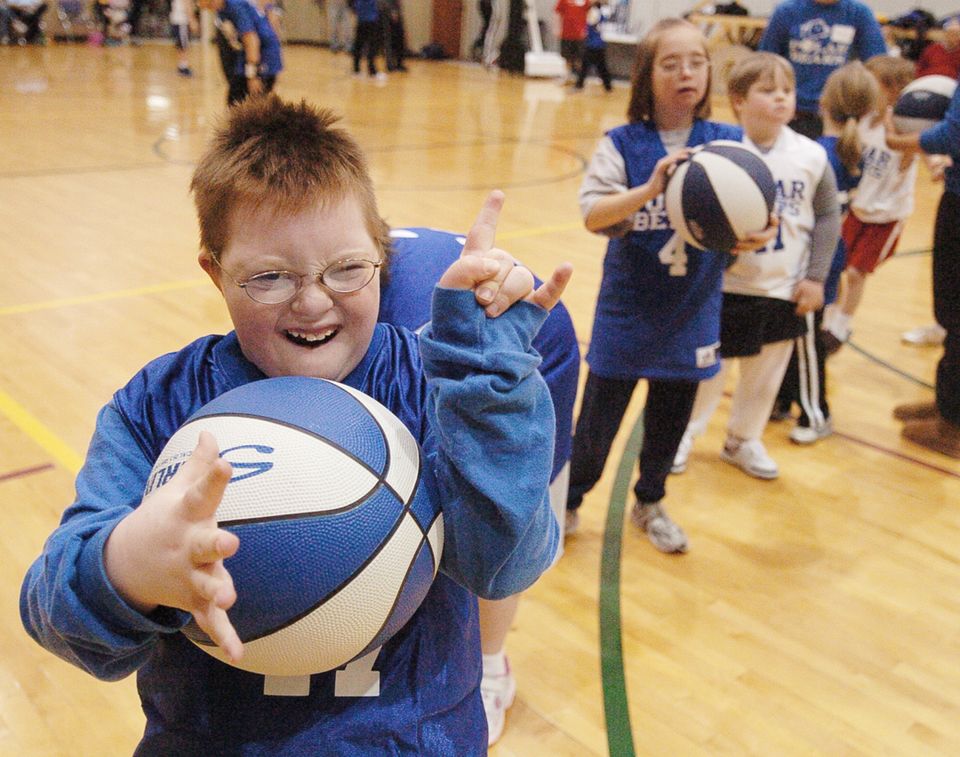
To prevent this chaos or the act of consistent meltdowns, here are a few tips to get you through the summer.
1) Talk about school ending the last few weeks of school. You do not want school to end without you mentioning it to your child first. During your discussions, make sure you let your child know all the fun things that they will get to do in the summer.
2) Keep a calendar and highlight the summer months (you can also use this tip for all breaks throughout the year). For some children, this is helpful to see when the summer break will begin and when it will end.
3) Set and keep up with a consistent schedule. Depending on your family, summers can be lazy and relaxing days, or they can be hectic and sporadic. Since your child is use to a consistent routine, it is also important to keep up a routine and schedule as much as possible. Your schedule and routine should be as predictable as possible, just like it was during the school year.
4) Keep your child informed. Using visual schedules and/or telling your child what will happen each day, will keep your day organized and prevent any meltdowns resulting from a lack of a predictable schedule.
5) Continue using whatever supports, activities, and behavior strategies that you used during the school year. Unfortunately, during this time, you may see old behaviors and/or sensory issues that you have dealt with in the past arise again and you will have to resort to methods that you have used previously.
6) Keep your child busy! Whether you set up playdates with their classmates, send them to summer camp, or schedule activities at home, make sure your child is active. Whatever you decide to do, remember to keep a routine and schedule as much as possible.
7) Use social stories. Social stories are a great way to prepare children for future activities (such as a transition to summer break) and to reinforce behaviors. Create a social story to help with each new activity that your child may encounter. This is especially important if you will be traveling during the summer.
8) Find therapeutic activities. In addition to setting a consistent routine and schedule, finding therapeutic activities such as horseback riding can help stimulate your child’s senses over the summer.
9) Let your child pick activities that they want to do this summer and place them on a calendar. This way they will have things to look forward to throughout the summer.
10) If your child will be going to summer camp, visit the camp first and take pictures. This way your child can become acclimated with the environment and who their camp counselors will be.

THINGS TO KNOW
Remember a child that depends on and thrives off a set schedule and routine AND transitions into a summer break, most likely will have some difficulties.
Recognize that there may be a period of adjustment to the summer activities.
Watch out for regression in skills, ability and behavior.
You can decrease the number of meltdowns and time of adjustment period with a well-planned and repetitive routine and schedule.
When going to the park and/or other group activities, be on alert for any bullies trying to take advantage of your child.
If your child is going to ESY, go with them the first day. Starting a summer program in a new school with a new teacher can be quite scary and intimidating.

If you are looking for ideas for a summer program, do not forget to check out your local libraries, museums, parks and recreation departments, and religious groups for the availability of programming to fit your child’s needs.
AND HERE IS ONE OF THE BEST TIPS…
Dr. Ifeanyi Ufondu says, “Have fun.fun, fun! Summers are suppose to be enjoyable. So, get outside, try new things, always have a backup plan and be patient.”
What is your family doing this summer?
Nigel has been attending an inner-city school in the Los Angeles Unified School District (LAUSD) since kindergarten, and has always been a quiet student.
A few years ago, when his teacher recommended he be evaluated for an Individualized Education Program (IEP), the Mom checked in with Beautiful Minds Inc. – Advocacy & Special Needs Solutions first. She had been through the process before with her oldest child, Nigel and knew full well the long term consequences of having a child “labeled” as needing special services.
According to Beautiful Minds Inc. – Advocacy & Special Needs Solutions founder and advocate, Ifeanyi A. Ufondu “The decision to have a child evaluated within the DOE system cannot be taken lightly. It’s a lifelong designation that will follow that child for their entire academic journey.” Ufondu further asserts, “Every future teacher your child encounters will have certain perceptions and expectations about him/her before they enter the classroom. Every new school will have to be assessed for their ability to serve that child’s needs, or whether they can gain the funding to do so.”
THE IEP JOURNEY CAN BE A LONG ONE
A family has to stay on top of endless meetings, conference calls, and appointments with education specialists. Decisions about where the student can enroll for middle and high school, how they will be administered the standardized tests, whether they will require a special classroom, it goes on and on, year after year.
Even if a learning disability is clear to everyone, a family may find that there are no public schools available with the services they need. At this point, some parents hire an advocate and at times even must hire a lawyer to sue the district to reimburse them for private schooling, or special services that aren’t covered. This is all daunting, especially if a family has limited time or financial resources.
HONORING A PARENT’S DECISION
Because of her past experience, Nigel’s Mom was inclined to push back and tell the school no. She discussed this decision with Beautiful Minds Inc. – Advocacy & Special Needs Solutions, but in the end it was her decision to make, and she chose to forgo having the evaluation done. This is what we call an EMPOWERED parent, one that decides what’s best for her child, and stands by it.
This semester, and now in third grade, Nigel was placed on the honor roll at his school, and he is thrilled. His tutor, Michael Diaz of Beautiful Minds Inc. – Advocacy & Special Needs Solutions says, “This has built Nigel’s confidence so much that he is tackling the grade level book they are reading in class,” Because of Winn-Dixie by Kate DiCamillo.
At Beautiful Minds Inc. – Advocacy & Special Needs Solutions, we are not suggesting for a minute that a child with a possible learning disability avoid getting the help that they need. But, we must stress how important it is for parents to seek outside opinions from educators and advocates they trust. Having an evaluation done within the DOE system is the first step down what can be a very long road, and parents need to be certain they are making the right choice for their child.
